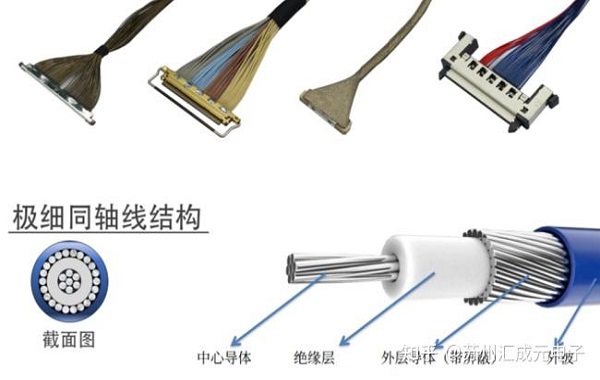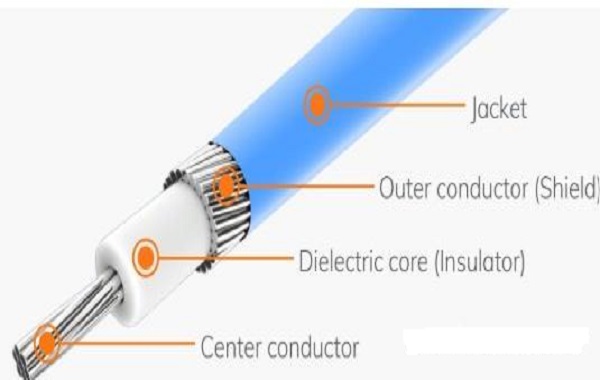Categorization:Harness Component

The most significant advantage of ultra-fine coaxial cables lies in their unique coaxial structure. Internally, they are wrapped in layers of a central conductor, dielectric layer, shielding layer, and outer jacket, forming a highly stable electrical performance transmission channel. This design performs particularly well in high-frequency signal transmission, effectively reducing crosstalk and electromagnetic interference (EMI), ensuring signal integrity. Compared with traditional parallel wires or flat cables, micro coaxial cables exhibit superior performance in Gbps-level high-speed communication, especially suitable for systems requiring high-speed, low latency, and anti-interference capabilities. Their diameter typically ranges from 0.2mm to 0.5mm, greatly saving space and allowing flexible wiring in high-density modules without sacrificing performance.

Part Two: Performance of Mainstream Products
Currently, mainstream ultra-thin coaxial cable products have reached astonishing levels of transmission speed:
1. Mainstream high-performance micro coaxial system, capable of stably supporting a single channel rate of up to 32Gbps, meeting the needs of high-definition video, MIPI interfaces, and high-speed storage.High-end products with optimized structure and materials, with a speed increased to 40Gbps to 64Gbps, commonly used in AI computing platforms, 5G communication equipment, and high-bandwidth image acquisition systems.
In the cutting-edge field, some ultra-fine coaxial technologies have already achieved 112Gbps PAM4 signal transmission, enabling the total system bandwidth to reach the Tbps level, meeting the needs of PCIe 5.0/6.0 and data center-level interconnects.
This series of performance jumps reflects the potential and maturity of micro coaxial cable in dealing with new generation high-speed data applications.

The speed limit of extremely fine coaxial cables is not solely determined by the material, but rather the result of the combined effect of multiple factors:
Conductor and medium materials: High-purity conductors and low-loss mediums help reduce signal attenuation and reflection.2. Shielding Structure: Multi-layer shielding can significantly reduce external interference and ensure stable high-frequency signal transmission.
Connector technology: High-speed transmission not only depends on the cable itself, but also on the insertion loss and return loss control of the matching connector.
4. System environment: High-speed signals are limited during transmission by PCB trace length, interface matching, and system architecture design, making overall optimization crucial.
In summary, the performance of the micro coaxial cable is a collaborative achievement of design, materials, technology, and system engineering.

I amSuzhou Huichengyuan Electronic Technology Co., Ltd., long-term focused on the design and customization of high-speed cable harnesses and ultra-fine coaxial cables, committed to providing reliable high-speed interconnection solutions. If you have related needs or want to learn more, please contact:Manager Zhang 18913228573 (WeChat same number)。